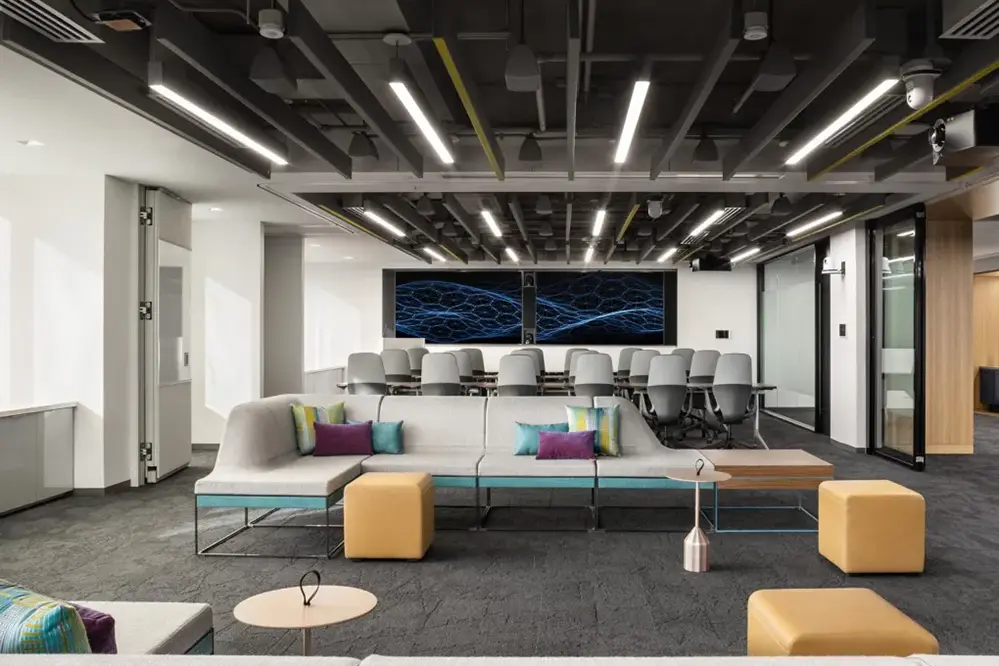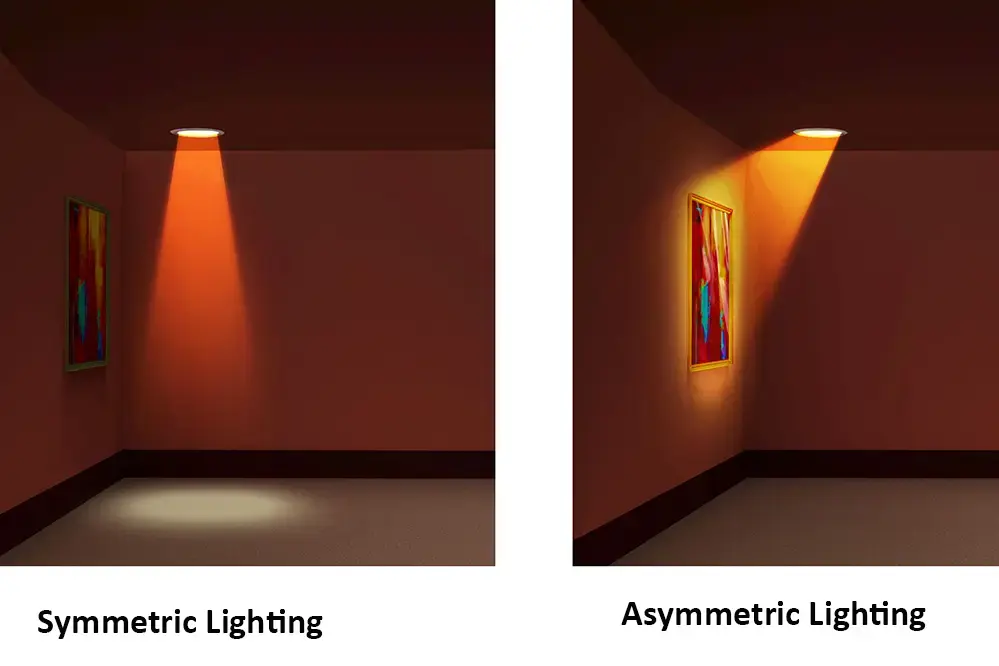Imagine stepping into a room where the lighting is so harsh that it feels like a spotlight is constantly following you. Understanding anti-glare lighting becomes essential in such scenarios, as it holds the key to transforming these spaces into areas of comfort and clarity. The right lighting can make all the difference, turning a glaring environment into a soothing oasis.
The significance of anti-glare lighting extends far beyond mere comfort. According to the American Society of Interior Designers, 68% of employees report dissatisfaction with their office lighting, with glare being a primary concern. This statistic highlights the widespread impact of improper lighting on productivity and health. By reducing glare, individuals can experience less eye strain, fewer headaches, and improved focus, making it a critical consideration for both personal and professional environments.
As we delve deeper into this comprehensive guide, you’ll discover the transformative power of anti-glare lighting and learn practical strategies to implement it in your own spaces. Whether you’re seeking to enhance your home office or optimize a commercial setting, this guide will illuminate the path to a brighter, more comfortable future. Join us as we explore the nuances of anti-glare lighting and unlock its potential to revolutionize your environment.
What is Anti-Glare Lighting?

Anti-glare lighting is a transformative approach in lighting design that prioritizes comfort and efficiency by reducing the harshness of bright light sources. It is revolutionizing interiors across homes and workplaces.
Such lighting can enhance visual comfort, providing a respite from excessive brightness.
By integrating anti-glare lighting technologies, spaces are not only perceived as brighter but also exude a sense of calm that encourages focus and tranquility, paving the way for enhanced productivity, creativity, and well-being.
The essence of anti-glare lighting lies in its ability to distribute light evenly and minimize reflections, offering a harmonious balance of illumination without the discomfort of direct glare. This innovation is pivotal in transforming settings into “glare-free” zones, allowing individuals to engage with their environment with unparalleled ease and confidence.
Importance of Reducing Light Glare
Reducing light glare is paramount in creating environments that are both welcoming and functional, with ripple effects on health.
Firstly, glare, an often underestimated factor in a well-designed space, can cause significant discomfort, leading to eye strain, headaches, and impediments in productivity. By mitigating glare, we not only improve visual comfort but also foster spaces that encourage focus and creativity. This enhancement is pivotal as it significantly boosts the overall experience of individuals in various settings, from offices to homes.
Moreover, glare reduction is a cornerstone of sustainable lighting design. As energy-efficient solutions rise, addressing glare ensures that the move towards conserving resources does not come at the expense of comfort and usability.
Thus, minimizing glare in our environments is a strategic step towards creating healthier spaces. This proactive approach reflects a commitment to the holistic well-being of individuals, ensuring that both their physical comfort and psychological needs are met. Through innovation and thoughtful design, we can redefine how light interacts with space, driving forward with clarity and purpose.
Types of Anti-Glare Lighting Solutions
Anti-glare lighting solutions vary in methodologies and applications.
Firstly, diffuse lighting techniques offer a simple yet effective approach. These methods involve the use of various materials to scatter light evenly, minimizing harsh reflections and bright spots. Consequently, they play an essential role in reducing potential for glare, making environments more accommodating and visually pleasant for users.
Reflective surfaces, when paired with an anti-reflective coating, can also enhance glare mitigation.
Additionally, task lighting provides brightness where needed – an efficient choice for spaces that require specific illumination without flooding areas unnecessarily. It employs focused lighting fixtures designed to illuminate targeted zones.
Finally, adaptive lighting systems incorporate intelligent technology that dynamically adjusts brightness and color temperature based on surrounding ambience. These solutions, aligned with both advanced new year designs and the latest research, offer a responsive approach to glare reduction that complements the evolving standards of modern living environments. With such diversity in options, the future of lighting is undoubtedly bright and optimized for comfort.
How to Identify Glare in Your Environment

Glare can significantly impact your visual comfort and effectiveness.
To effectively address glare, one must first learn to recognize its presence. This often manifests as discomfort or visual impediments in everyday activities. Look for areas where light intensity creates uncomfortable brightness or reflected images, disrupting your focus and diminishing your ability to see clearly.
Observation is key to identifying glare issues.
Take note of glare sources such as – not only direct sunlight streaming in through windows but also reflective surfaces like screens, glossy finishes, and even improperly positioned lighting fixtures.
By training your awareness to detect environmental glare, you can proactively implement solutions that harmonize your surroundings, such as repositioning lights or utilizing anti-glare tools. This not only fosters a more productive and pleasant environment but also aligns seamlessly with advanced lighting strategies of a new year, preparing your space for future innovations in comfort and efficiency.
Benefits of Anti-Glare Lighting
Enhanced clarity and reduced visual strain are key.
Anti-glare lighting significantly enhances our visual experience. This lighting solution not only aids the eyes by minimizing discomfort but allows for superior concentration in various settings, leading to an overall improvement in task performance. Moreover, investing in such an environment paves the way for heightened productivity and uninterrupted visual comfort.
Comfort at work and home improves immensely.
This type of lighting solution is multi-faceted – in how they make bright spaces more visually accommodating or in the seamless integration of modern, anti-glare technology.
With a growing emphasis on optimizing environmental conditions, anti-glare lighting technologies continue to evolve and innovate. They adapt seamlessly to individual demands, addressing the pressing need for comfort in living and working spaces. Their integration offers not only visual relief but paves the path for sustainable and adaptive lighting solutions.
Comparing Anti-Glare Lighting Technologies
As light pollution becomes more prevalent, discovering technical solutions that combat glare is essential for enhancing visual comfort.
The market today offers diverse anti-glare technologies, each catering to specific lighting needs and environments. Products such as specially coated lenses, precision-engineered diffusers, and innovative electronic controls are designed to minimize excessive brightness. These advancements provide multiple avenues to reduce light glare effectively, ensuring spaces remain visually soothing and functionally efficient.
Intriguingly, some systems address glare through adaptive lighting that adjusts intensity in response to ambient conditions. By incorporating sensors and algorithms, these setups offer a dynamic approach that redefines traditional static lighting solutions.
Thus, the ongoing technological evolution not only refines the efficiency of anti-glare lighting but continues to inspire teams across industries to explore new horizons. While each technology boasts its unique advantages, the common objective remains clear: to create safer, smarter spaces that enhance our daily interactions with light. In doing so, breakthrough innovations ensure we can work, live, and thrive under optimal lighting conditions.
Choosing the Right Anti-Glare Light for You
Finding the perfect solution demands thoughtful consideration.
To select the right anti-glare light, assess your specific needs. The first decision is whether the light source primarily aids task performance, mood enhancement, or general illumination. Equally important is the area’s existing illumination, exposure to natural light, and the potential for glare-related issues.
Keep efficiency and aesthetics as prime factors.
Consider lights with adjustable features—whether dimmable units or fixtures with directional capabilities—to tailor lighting to varying scenarios. Additionally, investing in advanced anti-glare technologies reflects a commitment to quality.
Ultimately, the right choice will harmonize technological innovation with personal requirements, transforming your environment into a haven of comfort and efficiency. By understanding what is anti-glare light and how to reduce light glare, it’s possible to achieve both visual clarity and stylishness in everyday spaces.
Implementing Anti-Glare Lighting in Workspaces

Anti-glare lighting is essential for productive workspaces.
Incorporating anti-glare solutions enhances workers’ comfort and efficiency. The right blend of illumination can reduce the eye strain caused by reflective glare, allowing employees to concentrate better and accomplish more. Furthermore, it minimizes the risks associated with high levels of glare, fostering safer environments for everyone involved.
A systematic assessment of workspace lighting can lead to improved work performance.
Experiment with various lighting options, such as the strategic use of shades or installing diffused light sources. These measures can contribute significantly to reducing the intensity of glare, thus creating optimal working conditions.
By investing in thoughtful lighting design, companies can experience measurable improvements in productivity and employee satisfaction. As of the new year, contemporary advancements in lighting technology offer an array of choices for organizations willing to prioritize their workforce’s well-being. Committing to anti-glare solutions is an inspiring step toward a future where efficiency, comfort, and innovation coexist harmoniously.
Anti-Glare Solutions for Home Settings
Proper lighting is essential to achieving a comfortable home environment that fosters relaxation, and anti-glare solutions play an integral role in this.
Consider using softer, indirect lighting sources that reduce direct glare.
Opt for adjustable lighting fixtures, ensuring flexibility in positioning bulbs for optimal light distribution. Such versatility can substantially enhance comfort, functionality, and aesthetic of your living spaces.
Additionally, incorporating dimmer switches allows you to modulate light to a level that suits a myriad of activities, be it a social gathering or a quiet evening of reading. From embracing warm colors to “smart” adjustments, these efficient strategies can transform everyday illumination into an uplifting, glare-free experience.
Tips to Reduce Light Glare
A thoughtful approach to lighting design can significantly enhance visual comfort and reduce the strain caused by glare, thus offering an inspiring transformation of spaces.
Consider using lampshades that diffuse light effectively.
Strategically positioning curtains or blinds can control natural light influx, creating a balanced and comfortable atmosphere, while reducing the harshness of direct sunlight through windows.
Experimenting with matte finishes on walls and ceilings can further mitigate reflective glare. This simple yet powerful adjustment contributes to an elegant, glare-free environment that inspires focus and relaxation. By leveraging these strategies, you not only optimize the functionality of your spaces but also create a sanctuary of illumination and inspiration.
Understanding Glare and Its Causes
Glare is more than a mere annoyance; it is a complex visual phenomenon that can significantly disrupt our ability to perceive our environment clearly. It arises when excessive brightness or significant contrast in lighting conditions overwhelms the eye, hindering our vision.
Spatial distribution and intensity of light largely contribute to glare.
Sources include direct sunlight, reflective surfaces, and artificial lighting, demanding tailored solutions to mitigate their effect.
By understanding how glare disrupts visual comfort, we can strategically address and minimize its impact through innovative design interventions, such as the diffusion of light to reduce harshness.
Furthermore, the role of light intensity, color temperature, and directionality is crucial in managing glare, empowering us to craft environments that facilitate visual harmony and cognitive well-being.
Ultimately, the crux of reducing glare lies in harmonizing light within our spaces, thereby unlocking the transformative potential of thoughtful illumination.
Evaluating the Effectiveness of Anti-Glare Solutions
Addressing glare requires precise evaluation and tailored solutions.
Effective anti-glare solutions stem from an informed approach. It is essential to assess the specific environments where glare presents challenges, allowing for interventions that seamlessly integrate and enhance visual clarity. Additionally, relying on a mix of quantitative measurements and qualitative feedback ensures these solutions are fit for purpose across diverse applications.
Advanced metrics underline their performance.
Evaluation often focuses on parameters like light reflection reduction, which is pivotal for spaces demanding high levels of visual precision, such as offices or public buildings. Tracking user comfort and visual satisfaction provides a qualitative perspective, enriching the analysis.
By continuously fine-tuning anti-glare technologies, industries worldwide are equipped to foster environments that prioritize comfort and functionality. This empowers designers and planners to enhance workplace productivity and individual well-being, capturing the vast benefits intrinsic to proper glare management while inspiring forward-thinking illumination strategies.
Innovations in Anti-Glare Technology
Recent advancements have revolutionized anti-glare solutions, making them indispensable for modern living and workspaces.
One breakthrough is the development of a specialized microstructure technology that diffuses incoming light, minimizing distracting reflections. This innovation allows for optimal visual conditions without compromising brightness, gaining traction in industries ranging from automotive to architecture. As flexible as it is effective, this cutting-edge approach holds tremendous potential to redefine how we interact with our illuminated environments.
Furthermore, the advent of advanced coatings provides a transformative layer on screens. As a result, these practical adaptations not only facilitate smoother digital interface interactions but also significantly enhance readability in varying light conditions by effectively mitigating glare and improving overall clarity.
Finally, the integration of smart lighting systems offers personalized control over luminous intensity and direction, catering to individual preferences and dynamically adjusting to environmental changes. Such forward-looking innovations ensure that anti-glare technologies not only address present-day requirements but also set the stage for sustainable, human-centric design in the future, ultimately crafting surroundings that inspire and nurture innovation at every turn.
Cost Considerations for Anti-Glare Lighting
In evaluating the financial aspect of anti-glare lighting solutions, it’s crucial to consider the balance between initial investment and long-term benefits, ensuring an optimal choice that supports both financial and practical objectives.
Anti-glare lighting is designed to minimize eye strain and improve visual comfort, warranting its value.
Typically, upfront costs may appear hefty; however, investing in quality fixtures and technologies (reflective surfaces and adaptive control systems) can be financially rewarding.
Long-term savings stem from enhanced energy efficiency and reduced maintenance due to sturdier components and advanced technology integration, creating a lasting economic advantage.
Perhaps more importantly, investing in anti-glare lighting supports sustainable practices, contributing not only to reduced energy consumption and increased durability of the systems but also enhancing the quality of life and work environments through tailored lighting experiences.
Therefore, the cost of anti-glare light’s implementation is but a step towards brighter, sustainable futures. These decisions should undoubtedly reflect not only immediate financial projections but long-standing visionary outcomes.
Professional Consultation for Anti-Glare Implementation
Engaging a professional consultant ensures the efficient and effective application of anti-glare solutions, a vital step in achieving optimal lighting conditions.
Such expertise can significantly enhance the implementation process, leading to successful outcomes.
A thorough assessment performed by specialists includes evaluating the existing light infrastructure and providing a detailed plan customized to address specific visual challenges, compliance requirements, and aesthetic objectives, maximizing both functional and financial benefits.
Moreover, consultants are adept at navigating the latest advancements in anti-glare technology and design, thus ensuring alignment with cutting-edge industry standards. By fostering a collaborative partnership, organizations can tap into an invaluable resource capable of integrating global best practices into local contexts, ensuring an impeccable standard of visual comfort and energy efficiency.
Common Misconceptions About Anti-Glare
Anti-glare technology is often misunderstood in its scope.
Some believe that anti-glare solutions merely reduce brightness. This misunderstanding can lead to suboptimal use and missed opportunities for enhancing environments, as anti-glare encompasses a broader approach to light management. Consequently, failing to grasp the full potential of this technology might result in less effective applications.
It does more than curb excessive light.
Proper anti-glare systems aim to enhance visibility throughout – not only where glare is most noticeable – by balancing light distribution to all spaces. This holistic light management approach dispels simplistic ideas focused on patchwork glare-related fixes.
It is crucial to recognize that glare management solutions encompass multiple aspects of visual comfort, extending beyond mere brightness mitigation. As we progress through the new year with strides in lighting technology, understanding and embracing the comprehensive nature of anti-glare systems promise transformative improvements in diverse settings. These advancements facilitate optimal work, living, and leisure environments, reinforcing our commitment to a brighter, more visually harmonious future.
Environmental Impact of Anti-Glare Lights
Anti-glare lights significantly contribute to a sustainable and eco-friendly future by minimizing unnecessary light pollution.
In recent years, researchers recognized that reducing glare greatly impacts the surrounding ecosystem, benefiting both wildlife and human well-being. The thoughtful design of anti-glare technologies not only optimizes lighting efficiency but also lowers energy consumption, which conserves resources and reduces our carbon footprint.
Moreover, it’s no secret that excessive artificial lighting disrupts ecological balance, hindering the natural behaviors of nocturnal creatures. By mitigating glare, anti-glare lighting fosters environments where wildlife can thrive alongside urban development, affirming responsible stewardship of our planet.
While the adoption of these lights grows, so does their positive ripple effect on the environment. This synergy between advanced sustainable practices and technology is central to meeting the demands of the 21st century without compromising ecological integrity.
Anti-glare lighting, therefore, is not just about enhancing human visual comfort; it’s about protecting our planet too.
Conclusion
Anti-glare lighting stands as a beacon of innovation, offering profound environmental benefits while amplifying human productivity. By balancing light efficiency with ecological conservation, it empowers societies to create sustainable spaces that harmonize with nature. This technology reflects a commitment to a future where human needs and planetary health are nurtured simultaneously.
Embracing anti-glare solutions is a testament to our dedication to sustainable innovation. It represents a harmonious blend of light artistry and science, encouraging us to move forward with enthusiasm and resilience. This approach fosters spaces that are not only brighter but also more aligned with ecological principles, paving the way for a healthier planet.
Whether in homes, businesses, or public infrastructures, choosing to reduce light glare is a vote for progress and preservation. It proves that we can illuminate the future while cherishing our world, demonstrating visionary foresight in today’s rapidly evolving landscapes. This collective action becomes a powerful catalyst for change, ensuring a brighter and more sustainable future for generations to come.





